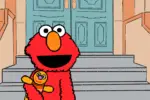As social media entrenches itself deeper into our lives, more and more features of society have transitioned from reality to the digital world, including popular consumer culture. Ads appropriate our information on the internet and tailor their outreach to chosen demographics, and online shopping has run countless shops and malls out of business. But companies have infiltrated our virtual lives even further than many of us may consciously realize. They’re taking over social media, from memes to mere interactions among mutuals, and brand Twitter is perhaps the most heinous culprit of all.
Ruinous slayers of memes, enemies to internet humor and puppets of adults painfully out of touch with youth culture, branded Twitter accounts are a scourge upon the already chaotic landscape of the bird app. As if promoted tweets weren’t enough of a trespass upon our timelines, now we have to see Wendy’s roast Burger King with a line as dumb as: “If you’re looking for a princess, you might want to let it go. Not interested in the frozen beef kingdom.”
Brand Twitter does fulfill an important function in the business world of the digital age: customer outreach. With the amount of time the average teen spends on the internet daily, it only makes commercial sense to take advantage of the easy and accessible advertising. If they can go viral, they can get free marketing and revenue.
These accounts capitalize on current events and mostly outdated trends in both their client and competitor interactions, assigning each of their tweets an inescapable cringe factor that leaves a bad taste in the mouth. As a prime example from the primordial days of Brand Twitter, also known as 2013, the Oreo account posted this after a power outage disrupted thousands of fans’ Super Bowl experience: “Power out? No problem.” The caption accompanied an image of the cookie with the line: “You can still dunk in the dark.”
Power out? No problem. pic.twitter.com/dnQ7pOgC
— OREO Cookie (@Oreo) February 4, 2013
Even if you put aside how the tweet makes light of a potentially serious situation, it remains an embarrassingly unsubtle ad. Many people found the tweet hilarious, with an Entrepreneur article even praising “How Oreo, Other Brands Dominated Twitter During the Super Bowl Power Outage.” Rounding out at a mere 14.4 thousand retweets, it’s not like the post really went that viral. But because news publications began paying attention to and reporting on Brand Twitter moments, the trend would quickly balloon into an integral tenant of the modern company.
The popularity of Brand Twitter accounts stems from their ability to intimately engage with their consumer base. For instance, the #NuggsForCarter craze dominated feeds for months back in 2017. Carter Wilkerson petitioned the Wendy’s account with a simple question: “How many retweets for a year of free chicken nuggets?” After the fast-food chain responded with “18 Million,” the Twitterverse deemed its new collective mission to be getting that man his “nuggs.” The original post now has almost 3.5 million retweets, and Carter did indeed get his nuggets in another viral post.
This massive user engagement has only fueled the fires of commercial accounts. The ability to reach and appeal to such a large audience with a single act of benevolence does wonders for a company’s PR department without wasting any profit. Nearly any brand you could name now has a Twitter handle, with some intern or random employee charged with running media presence and customer relations.
Some companies actually create funny content. Burger King has been garnering some genuine laughs lately, like from their picture of an arm covered in swatches of each type of their sauces, captioned with “how much for our palette? $600 mil.” This type of “dumb” humor easily appeals to an audience composed of mostly of Generation Z, highlighting the “right way” for a branded account to make use of memes. The fact that a person came up with the idea and took the time to execute it is all the more endearing.
You may be thinking, “Hey, these brands might be kind of cringey, but they seem pretty harmless and sometimes even good!” But the most central tenet of Brand Twitter accounts is their residence in the uncanny valley due to their resemblance to actual human beings. By interacting with each other and consumers, they personalize themselves in search of profit. They may effectively communicate their product and message, but it’s all under a guise that bolsters the brand’s public image.
Many people affectionately follow and praise the pages of Taco Bell, Denny’s, Old Spice and more. These accounts have acquired a somewhat respected and reliable role in the Twittersphere, as purveyors of comebacks, cringe-fests and occasionally actually funny content. But consider for a moment the surreal reality of a world where Sunny D tweets, “I can’t do this anymore,” and hordes of other brands come to their aid while 352 thousand people reblog it.
I can’t do this anymore
— SUNNYD (@sunnydelight) February 4, 2019
In the same society where real cries for help with mental illness are shamed, brands are enacting weird emotional narratives to evoke sympathy (and more spending) from their consumers. Apart from the use of irrelevant and/or unfunny trends, branded Twitter accounts also manipulate the Twitter user base’s perception and consequent buying habits. Even their most genuine posts are undercut with the realization that their very existence serves to sell a product.
Brand Twitter has become a cursed, nihilist reminder of the internet’s simultaneous meaninglessness and importance to our daily lives. So much of our lives are now conducted online, but social media has found a uniquely powerful hold. As commercial brands further appropriate social media for advertisement and image maintenance, we lose more and more privacy to corporations squeezing out every last penny they can get. Through Twitter, brands have found a way to push their products without a single mention of the word “ad,” and it’s through the bastardization of original content not meant for profit.
















